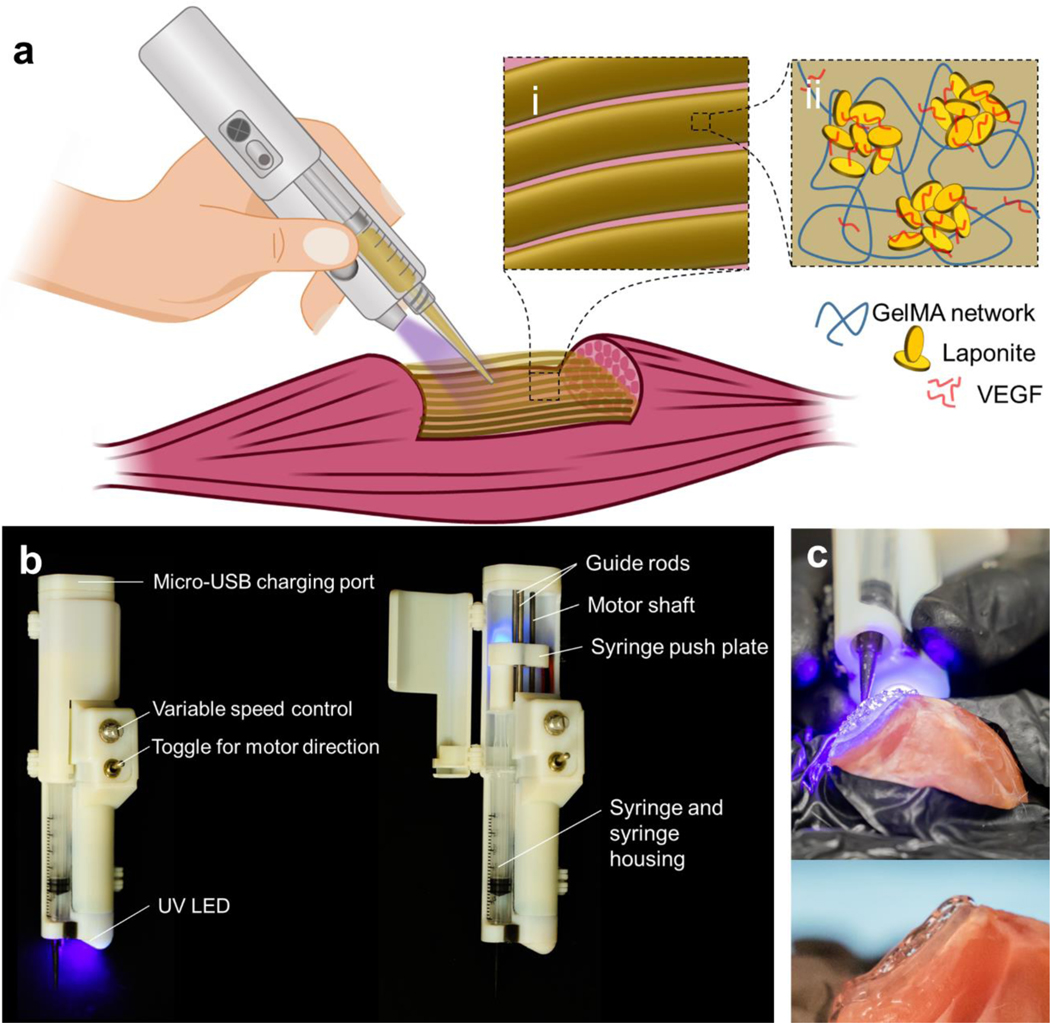Figure 1.
In vivo handheld printing of therapeutic eluting scaffolds. a) Conceptual diagram of organized scaffold deposition directly into a wound using a handheld printer. Schematics of the composite bioink (Muscle Ink) (i) printed into filament scaffold and (ii) its components including VEGF bound to Laponite® nanodisks and supported by a GelMA hydrogel network. b) Callouts of the features and components of the handheld printer. The force to compress the plunger of a syringe that is fixed within the printer housing is transferred via the push plate from the rotational shaft of an electric motor. Photopolymerizable materials are crosslinked through the embedded ultraviolet (UV) and blue light. c) The handheld printer is able to reconstruct the geometry of volumetric muscle loss (top) and adhere to local tissue (bottom) through the designed Muscle Ink composite hydrogel.

